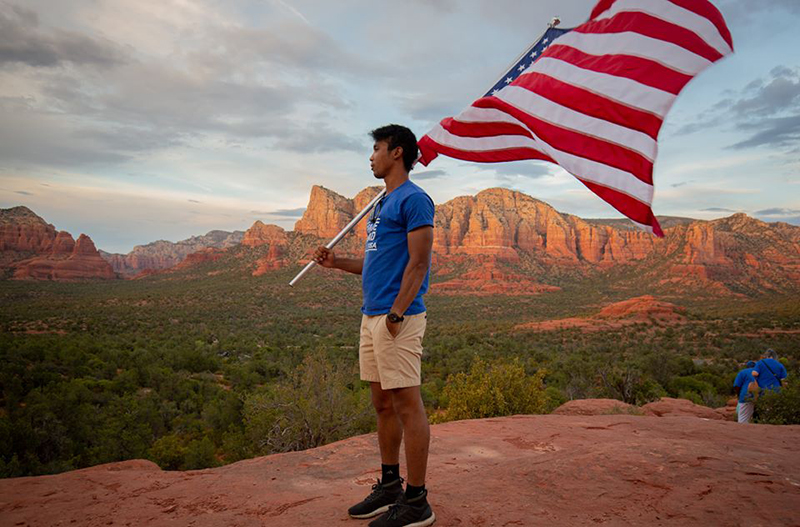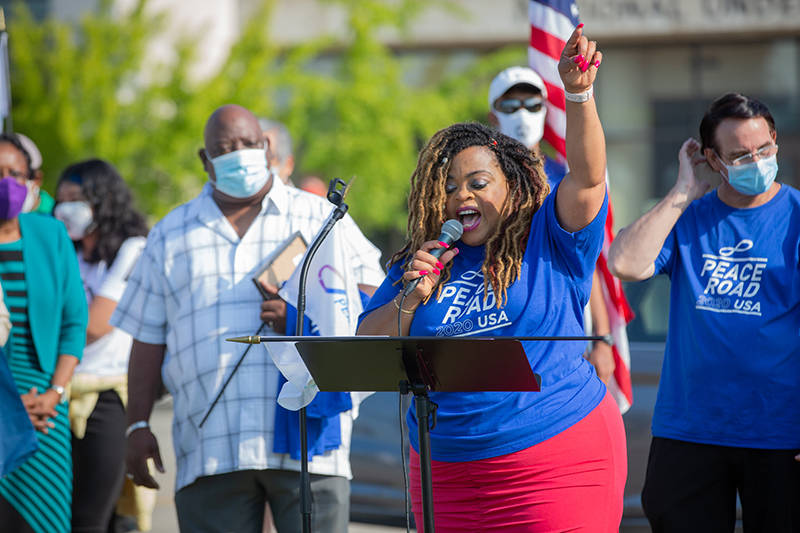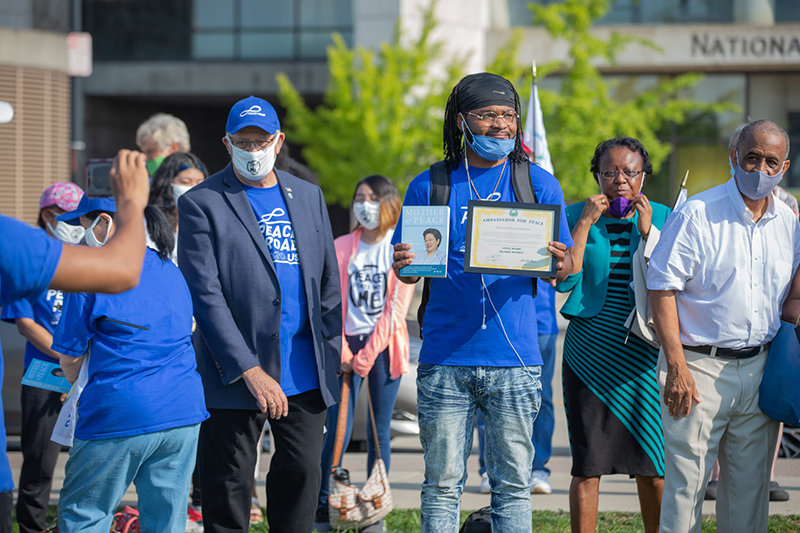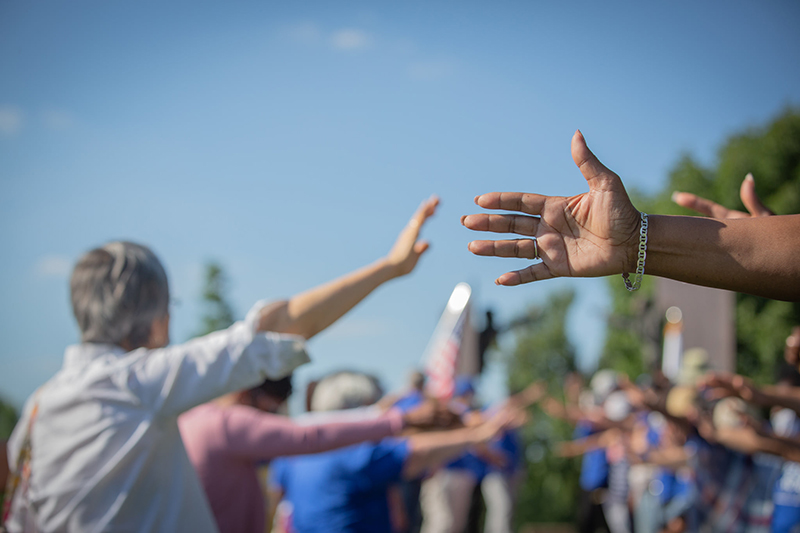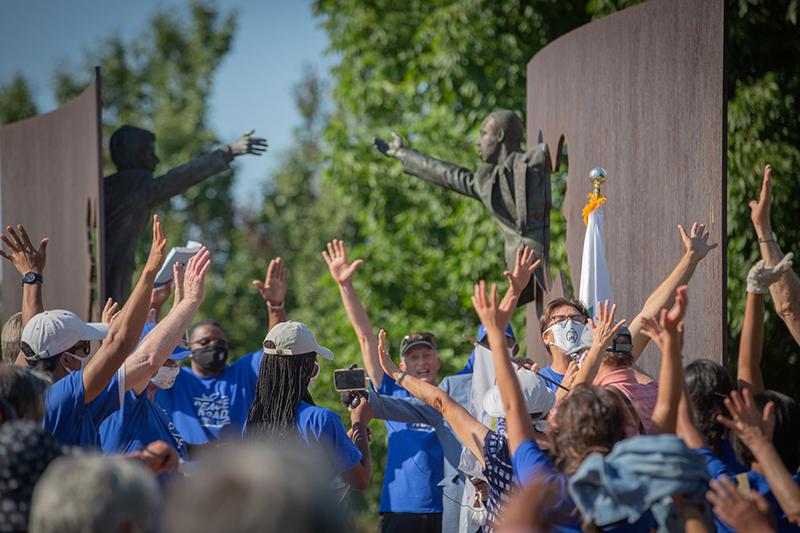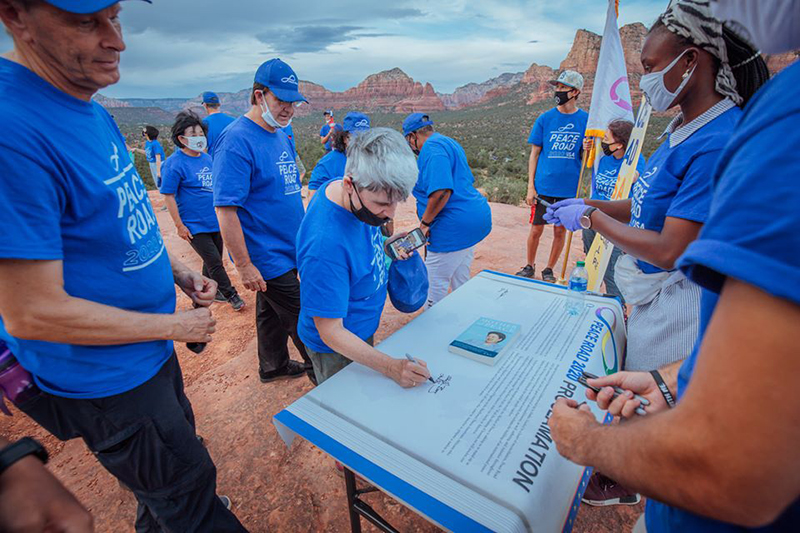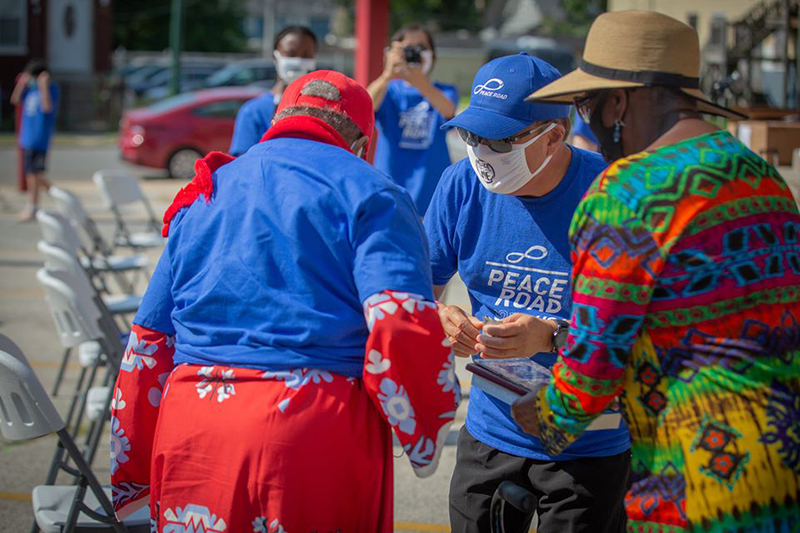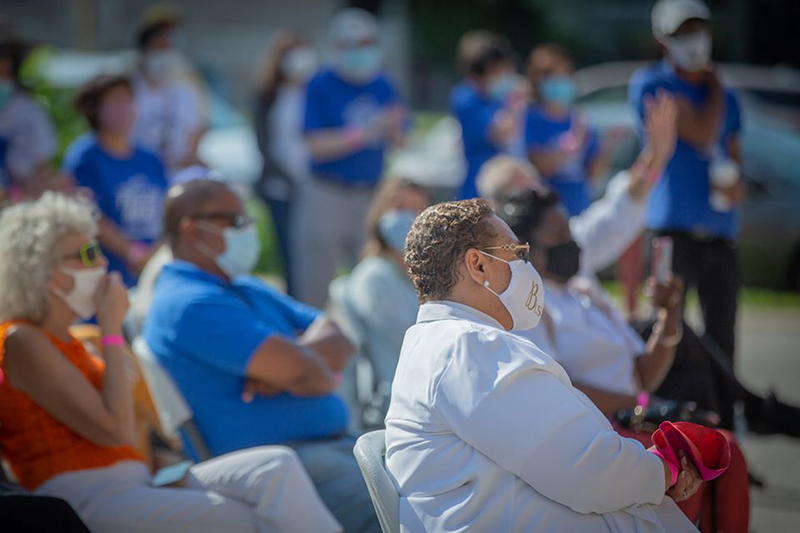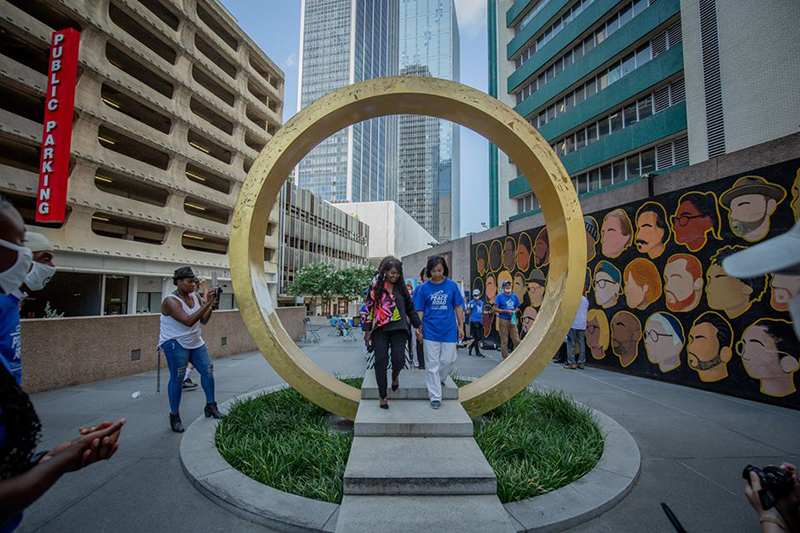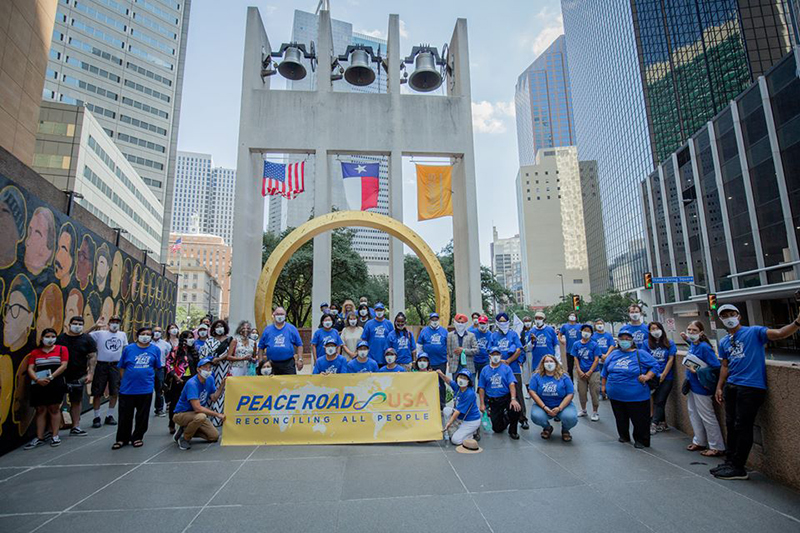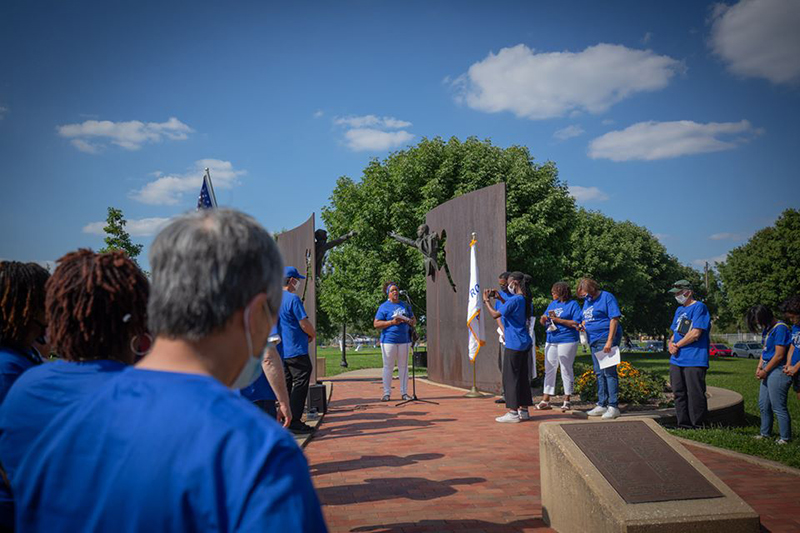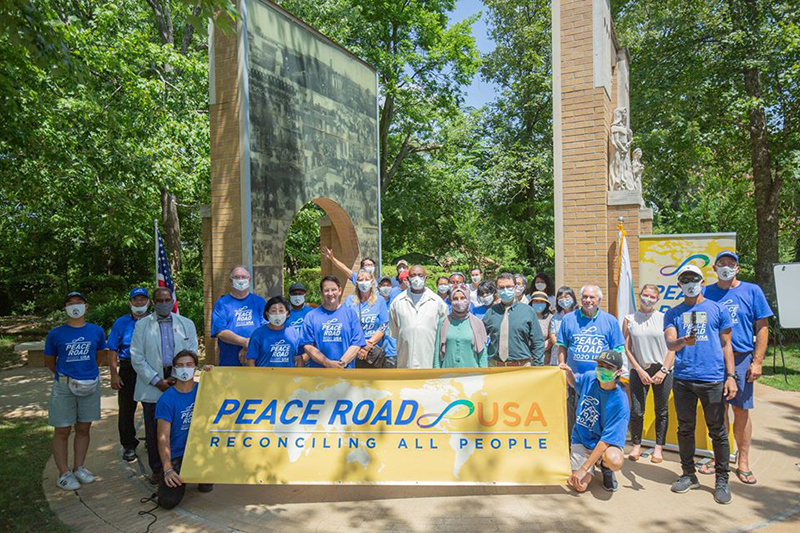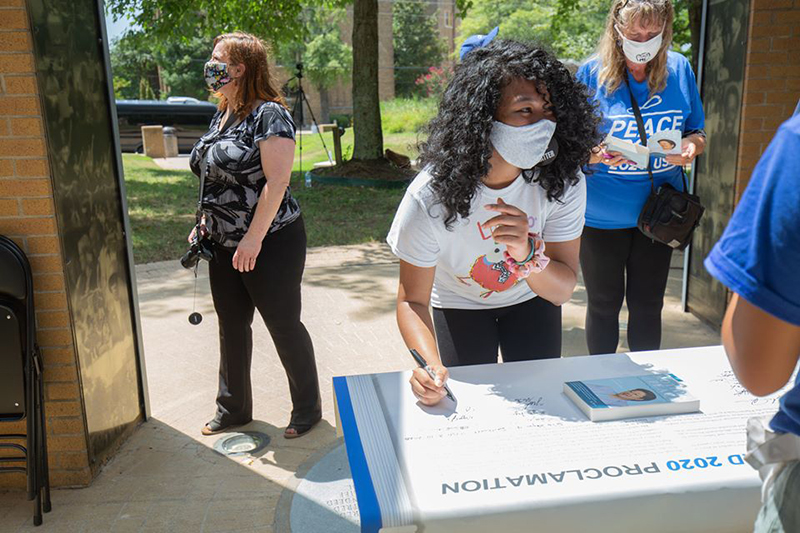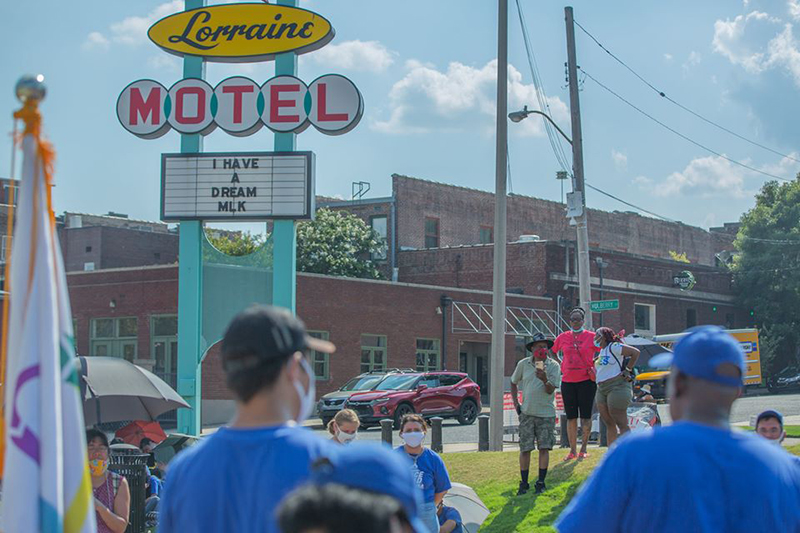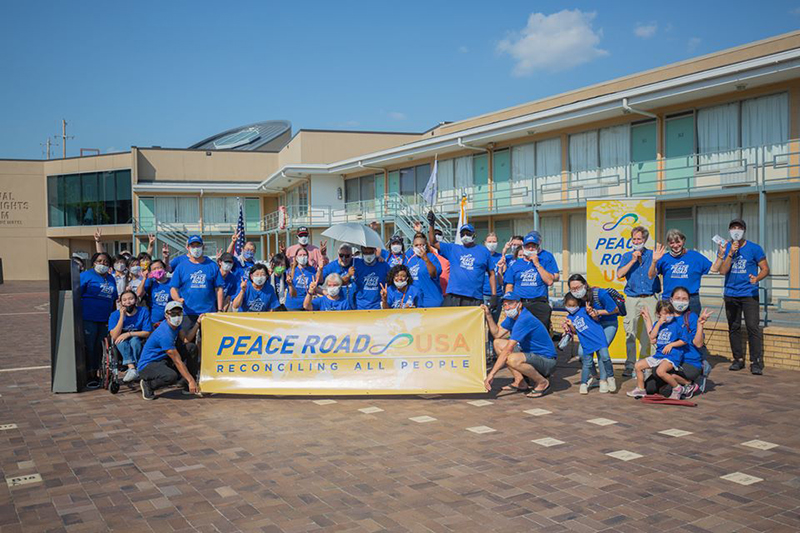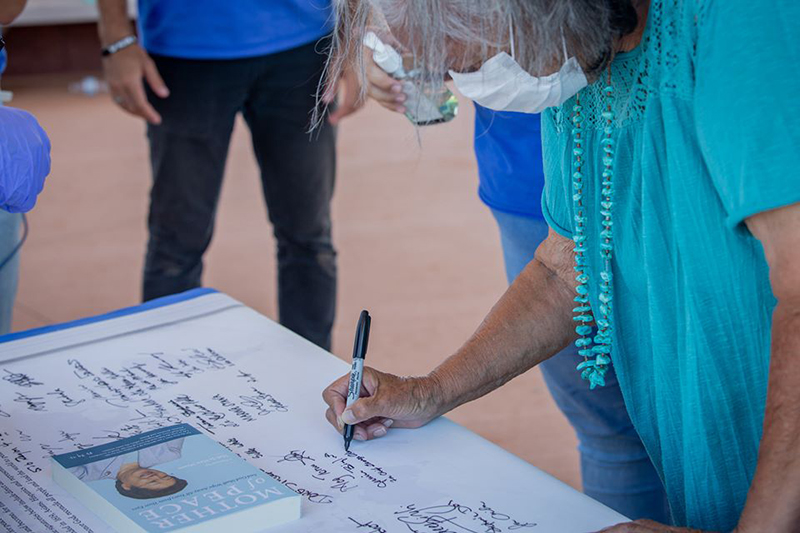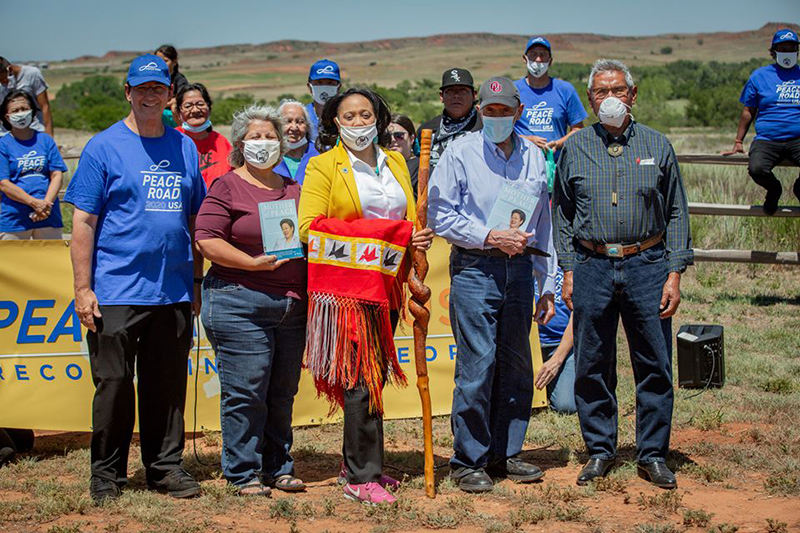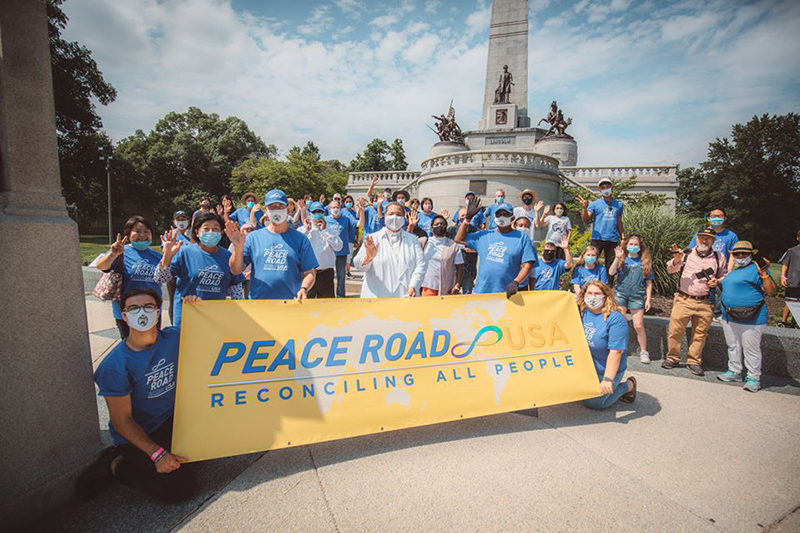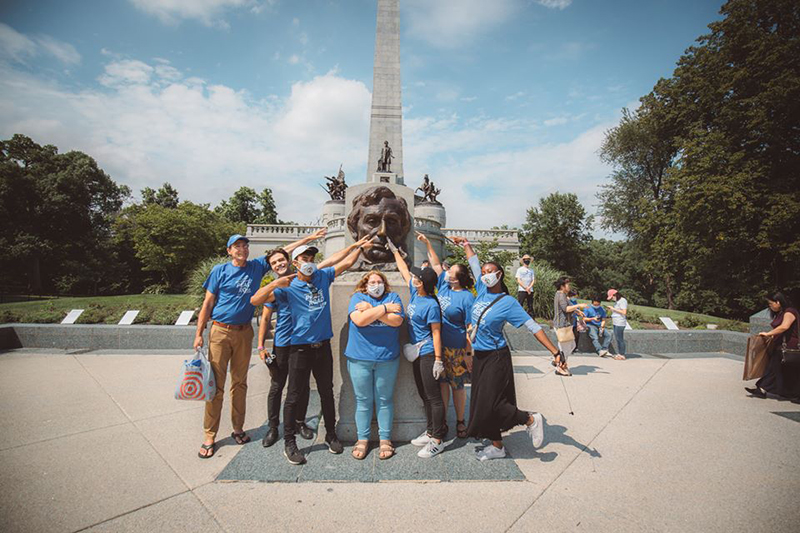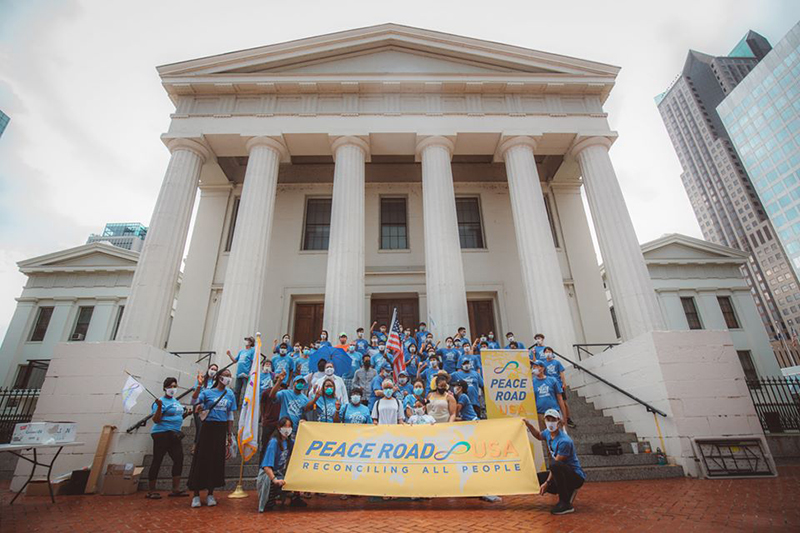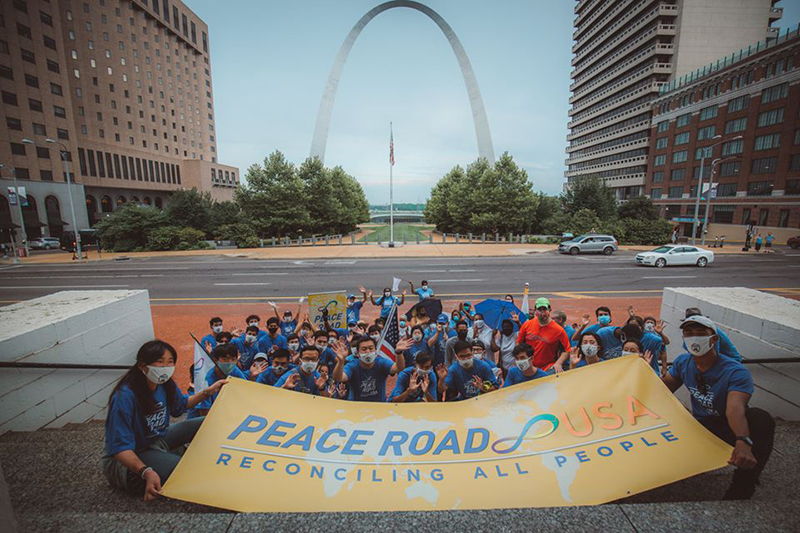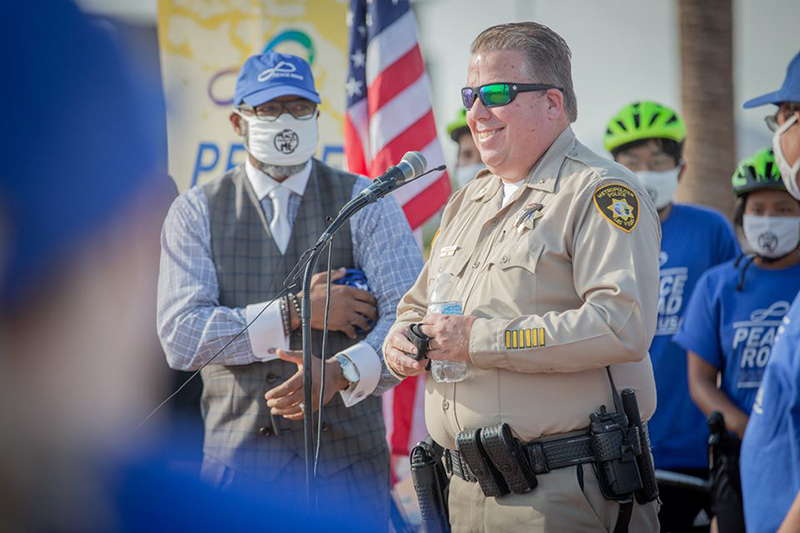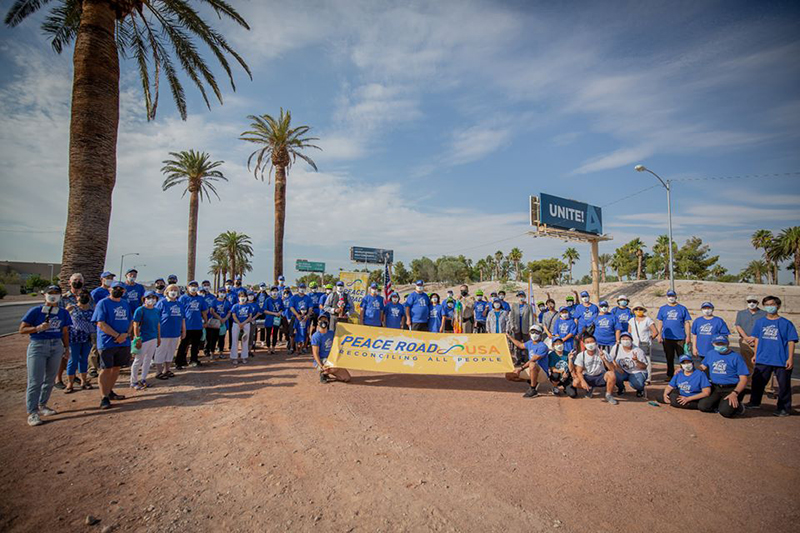10 States, 10 Days
Photo credit FFWPU-USA
Nearing the final stretch of the Peace Road: Reconciling All People national tour, the diverse team of young Unificationists spent the past 10 days traveling multiple states in the Midwest, Southwest, and now, the West Coast. They have joined local clergy and public figures at each stop, sharing messages and prayers of peace and reconciliation for America at various historical sites.
Launched in 2015 by Mother of Peace Dr. Hak Ja Han Moon, co-founder of Family Federation for World Peace and Unification (FFWPU), Peace Road is an international movement bringing together people of all backgrounds to bike, walk, and drive in solidarity for peace.
Here are highlights of the trip from August 7 to August 17:
Mother of Presidents
The Peace Road team arrived in Ohio, the birthplace of the most U.S. presidents, to pay homage at the Underground Railroad in Cincinnati on August 7. Gathering in front of the National Underground Railroad Freedom Center, the group absorbed the history of the site where an estimated 100,000 enslaved people sought freedom for 240 years.
“I felt something tug at my hand while reaching out over the water,” said Minister Carmen Allen, who shared with the group that she placed Dr. Moon’s memoir above the Ohio River nearby. “The other Peace Road participants helped me up from the river’s edge, like the abolitionists helped pull the slaves unto the shores of Ohio. I am grateful to Mother Moon for her courage and perseverance to see peace take root on earth and bring humanity back to God.”
Land of the Indians
The team then traveled to Indiana, whose name means ‘land of the indians.’ They visited the Landmark for Peace Memorial in Martin Luther King, Jr. Park in downtown Indianapolis. The memorial is where U.S. Senator Robert F. Kennedy gave an historic speech on in 1968 where he publicly announced the assassination of Dr. Martin Luther King, Jr. There were no riots after the speech and the memorial commemorates this victory while depicting Senator Kennedy and Dr. King reaching out to each other. “The road to reconciliation has two critical lanes: repentance and forgiveness,” said local Rev. Jack Harford. “Someone must repent, and someone must forgive in order to actualize Peace Road.”
Land of Lincoln
In Illinois on August 8, known as the Land of Lincoln, the Peace Riders visited New Friendship Missionary Baptist Church in the Englewood neighborhood of Chicago. “Dr. King came here in 1966 to begin the open housing movement and to address the corruption,” said Rev. David Rendel, FFWPU-USA Midwest director. “He spoke at this church the night before he gave a speech at nearby Marquette Park, where he was struck by a rock. He was not welcome here by white and black people and said of all the places he spoke for civil rights, Chicago had the strongest hatred.”
The team also stopped by the Abraham Lincoln Tomb in Springfield to honor the memory of the 16th U.S. President. Lincoln led the American Civil War and signed the Emancipation Proclamation, an executive order making enslaved people free.
Gateway to the West
Onward to St. Louis, Missouri, the Peace Riders convened outside the Old St. Louis County Courthouse next to the iconic Gateway Arch. The stainless steel monument, built in 1963, gets its name from the city’s role as the ‘Gateway to the West’ during the westward expansion of the U.S. in the 19th century. “This courthouse right next to the arch is where the Dred Scott decision was made, which allowed people in the south to come back to the north to retrieve slaves who escaped,” said Rev. Bruce Sutchar, Universal Peace Federation (UPF) Midwest director. “We are honoring the memory of Dred Scott today, and to repent for the U.S. Supreme Court decision that allowed this to happen.”
Walking in Memphis
The team arrived in Memphis, Tennessee, on August 9, where they went to the National Civil Rights Museum at the Lorraine Motel, where Dr. Martin Luther King, Jr. was assassinated in 1968. “This is a mournful city where so many historical things have happened,” said local Deja Davis, who joined the Peace Road event. “It’s hard to look on the bright side as a community, but we do come together and embrace the good things. It’s important to have peace and spread love.”
The Memphis Massacre in 1866 is also a large part of the city’s sorrowful history, where racial violence erupted in the early stages of Reconstruction after the American Civil War. “We must love our enemy,” said another local young woman. “We are anointed people and God will bless what we are doing as long as we keep our heart in the right place.”
Little Rock
In Little Rock, the Peace Riders visited the Arkansas Korean War Veterans Memorial on August 10, and also held a program at the Little Rock Central High School National Historic Site. Nine black students were denied enrollment at the high school in 1957, sparking a national crisis. “People from all over the South who were opposed to their enrollment came here,” said Bruce Biggin, UPF regional secretary general. “After three months, President Eisenhower had to call in protection for the students so they could integrate into the school. Eventually, after the school was integrated, this was a victory and success for integrating schools throughout America.”
Thanksgiving
The team gathered at Thanks-Giving Square in Dallas, Texas, on August 11. Designed to inspire gratitude and honor the great American and world traditions of giving thanks, the spiritually important square has brought together myriad religions and cultures for more than 40 years. “We went to the chapel in the square and the idea is to offer thanksgiving to the Lord, and offer thanksgiving for all that we have and all that He has given constantly,” said Rev. John Jackson, FFWPU-USA Southwest director. “This is the place where people of all races and faiths come together.”
The group also prayed for healing and reconciliation at Freedman’s Memorial Park and Cemetery. It was established as a burial ground for Dallas’s early African-American population in 1861, and as the name suggests, belonged to a community of former enslaved people.
Oklahoma
On August 12, the team went to Washita Battlefield National Historic Site in Mill County, Oklahoma, the location of the U.S. surprise attack on the Southern Cheyenne village of Peace Chief Black Kettle in 1868. About 150 Native Americans were killed. “There is a painted wall mural dedicated to the lives that were lost to the U.S. cavalry,” said Peace Road team member Soonmee Iwasaki. “You see the depiction of a mom carrying her baby in a basket running away, and all these men on horses coming in after the natives. Being here feels solemn; I’m still digesting what happened to these people. My heart feels heavy and I pray for their healing.”
Sedona at Sunset
The Peace Riders arrived near Canyon de Chelly in Sedona, Arizona, on August 13. The canyon was the site of the final battle between the U.S. army and Navajo Indians in 1864, ending the Navajo stronghold and settlements there. The Navajo was previously the largest nation in the Southwest. “This is an important place to come and repent for the misdeeds that happened here and the suffering that happened,” said local Rev. Staffan Berg. “The Apache were also here at one point before their exodus. There was a lot of hardship in this beautiful, historic place; it’s a place of heart.”
Las Vegas
The team ventured to Nevada on August 14 to gather near the billboards promoting the Mother of Peace in Las Vegas, and to liberate the spirits of those killed in a local shooting while honoring Las Vegas Metropolitan Police Chief John McGrath. He led the investigation of the 2017 shooting at the Harvest music festival that killed 58 people.
“I want to thank Peace Road for praying for peace,” said Police Chief McGrath. “The police department can’t do it by ourselves. We need the help of every member of the community, which is a little different here than most. We welcome people here from all over the world, so we have to have a welcoming arm to every race, religion, and continent in the world.”
Peace Road is currently in California, visiting Los Angeles and San Francisco before heading to the Northwest and Alaska in the coming days.
Stay tuned for more Peace Road stories, and follow the team’s journey on peaceroadusa.org. You can support the Peace Road 2020 tour on GoFundMe.

